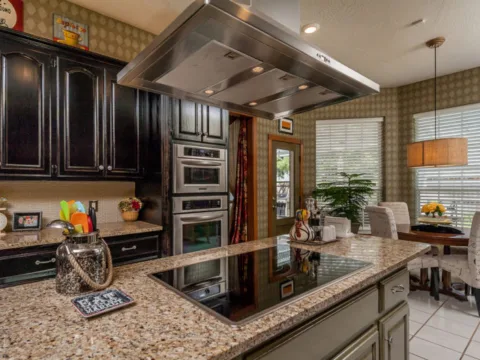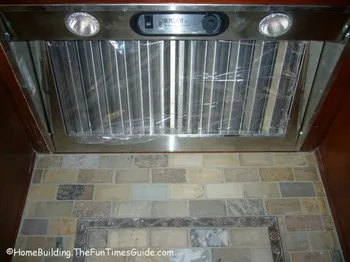Lately, I’ve been featuring excerpts from my interview with Paul Ryan from the DIY Network.
Today, I’m sharing his advice on range vent hoods.
Randy: Are there any innovations out there beyond the conventional vent hood — besides like a Jenn-Air with the downdraft vent?
Paul: Yeah… You’ve got the direct vent over the stove. You’ve also got the downdrafts that are actually built right into the stove that you can vent out.
A lot of times what you find on the downdrafting on the appliances is that it’s just sort of a pop-up filter that takes the air out, recycles it, and pumps it back in. But you can get the downdraft that actually vents out of the house. So, if anything, the innovation there, it’s the potential of actually using a downdraft of venting it out of the house without recycling it back into the room.
As far as the vents themselves, you’ve gotta know what you need as far as the actual makeup air and how much air it actually removes from the house.
Probably the only innovation that I’ve seen — as far as the actual vents themselves — is in the design. On any design that I’ve seen, it might be cabinets, it might be lighting, it might be countertops, it might be all that kind of stuff — the widest variation that I have seen is in a vent hood. You can get glass vent hoods. You can get all stainless steel vent hoods. You can get vent hoods with custom wooden boxes built around them.
Randy: I like that glass one you did on the DIY projects website. That was beautiful.
Paul: Yeah, that was awesome. I mean…it’s just crazy! It’s crazy what you’re seeing with all these different designs for that. So I think, if nothing else, it’s the design in the vent hood that adds the decorative look in kitchens.
Randy: Right. Now what about the optimum CFM’s (Cubic Feet per Minute) for an exhaust fan for a 6-burner and a 4-burner range?
Paul: It all depends on the size of your house. Obviously, with some of the larger vents you’re gonna have to have some make-up air. So it all depends on the size of your kitchen and the size of the room that you’re actually venting. Typically, a lot of the vent hoods that we’re seeing now are 600 CFM. That’s pretty powerful.
I think a minimum is a little over 200 CFM or something. So these huge 600 CFM venthoods are pretty darn powerful. And a lot of times people put them in small kitchens. They’re finding that — you know what — it’s a little bit too small, and so they need to have some make-up air in there. So there’s a few things that people need to determine there.
Randy: Do you have any particular brands that you like?
Paul: Not really. I mean nothing really sticks out. I have a hard time recommending one brand over the other because so many of the ones that I’ve used are just — they’re really, really nice stuff. So, there’s nothing that really sticks out.
More About Downdraft Ventilation
- Most Powerfaul / Strongest Downdraft Ventilation
- Wolf Or Jenn-Air / Hood Or No Hood?
- KitchenAid Downdraft Ranges
- Pros & Cons Of Downdraft Ventilation
- Tips For Replacing A Downdraft Range Or Center Downdraft Cooktop






